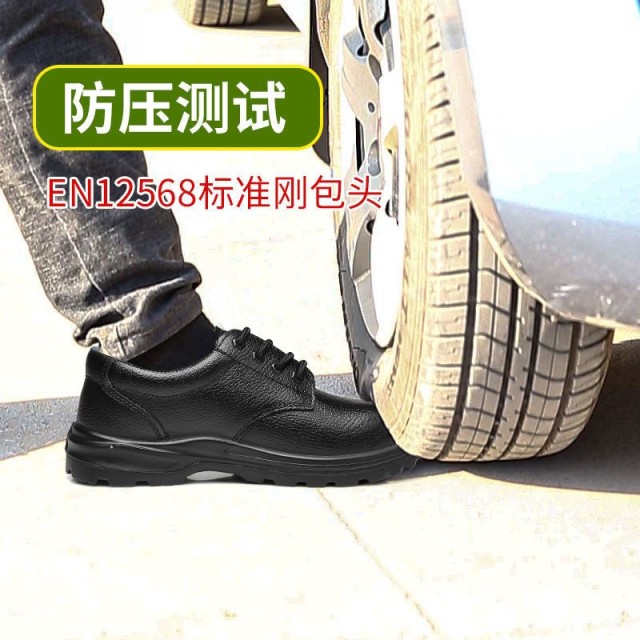When workplace safety depends on your footwear, selecting the correct toe protection isn't just about compliance—it's about preventing life-altering injuries. This guide breaks down how steel, composite, and specialized materials address specific hazards while meeting ASTM/ANSI standards.
Understanding Toe Protection Fundamentals
Molecular Composition Differences: Steel vs Composite
Steel toes use hardened alloys to create a rigid shield, excelling in impact resistance but posing drawbacks in extreme temperatures. Research shows these caps can transfer cold (-20°F/-29°C or lower) or heat (120°F/49°C+) to the wearer within minutes—a critical concern for outdoor workers.
Composite toes blend materials like carbon fiber, Kevlar, or thermoplastics. They’re lighter and non-conductive, making them ideal for:
- Electrical work (dispersing currents away from the foot)
- Airport security (avoiding metal detector triggers)
Decoding ASTM F2413 Codes: What "EH" Really Means
The ASTM "I" rating confirms impact resistance (75 lbf force), but "EH" (Electrical Hazard) certification requires:
- A sole that withstands 18,000 volts for 60 seconds
- No conductive components in the heel/toe area
Key takeaway: An "EH" label doesn’t guarantee full electrical safety—it’s only one layer of protection against live circuits.
Matching Boots to Hazard Environments
Electrical Work: How Carbon Fiber Disperses Current
Composite materials inherently resist conductivity. In lab tests, carbon fiber toe caps reduced electrical flow by over 95% compared to steel when exposed to low-voltage currents (up to 600V). However, EH-rated boots remain essential for high-voltage scenarios.
Sub-Zero Conditions: Metal's Thermal Transfer Risks
Steel toes in freezing environments can:
- Drop to ambient temperatures within 15 minutes
- Increase frostbite risk by conducting cold directly to toes
Solution: Insulated composite boots maintain a stable internal temperature, with some retaining warmth 50% longer than steel-toe equivalents in -40°F/-40°C conditions.
Beyond the Toe Cap: Complementary Safety Features
Midsole Protection Against Compression
ASTM standards require metatarsal guards to prevent crushing injuries. Look for:
- Internal met guards: Often composite plates that deflect compression forces
- External guards: Heavy-duty external bars, but these add weight
Chemical Resistance Comparisons
| Material | Resistance to Acids | Resistance to Solvents |
|---|---|---|
| Nitrile rubber | High | Moderate |
| PVC | Moderate | High |
| Thermoplastic polyurethane (TPU) | Low | High |
Pro tip: Pair chemical-resistant uppers with non-absorbent composite toes to prevent corrosive seepage into protective layers.
Secure Your Workforce with Tailored Safety Solutions
3515’s manufacturing expertise delivers boots engineered for your hazard profile—whether it’s arc flashes, chemical spills, or Arctic temperatures. Let’s collaborate to outfit your team with OSHA-compliant footwear that balances protection and comfort.
Have questions about optimizing toe protection for your industry? Our material scientists can guide you through ASTM testing data and real-world performance metrics.
Products You Might Be Looking For:
Explore customizable safety footwear for workplace hazards
Related Products
- Wholesale Durable Breathable Safety Boots Custom OEM Manufacturer
- Customizable Anti-Smash Safety Boots for Wholesale & Private Label Manufacturing
- Wholesale Customizable Suede Safety Boots - Puncture-Proof with Velcro Closure
- Puncture-Resistant Velcro Safety Boots for Wholesale & Custom Manufacturing
- Safety Footwear Wholesale Manufacturer for Custom OEM/ODM Production
Related Articles
- How Safety Standards for Steel Toe Boots Protect Workers Beyond Impact Resistance
- Steel Toe Boots vs. Modern Alternatives: Making the Right Safety Choice
- How to Prevent Foot Discomfort Without Sacrificing Safety in Steel Toe Boots
- Steel Toe vs. Composite Toe Boots: How to Choose the Right Safety Footwear for Your Job
- How to Prevent Foot Injuries from Steel Toe Boots Without Sacrificing Safety



















